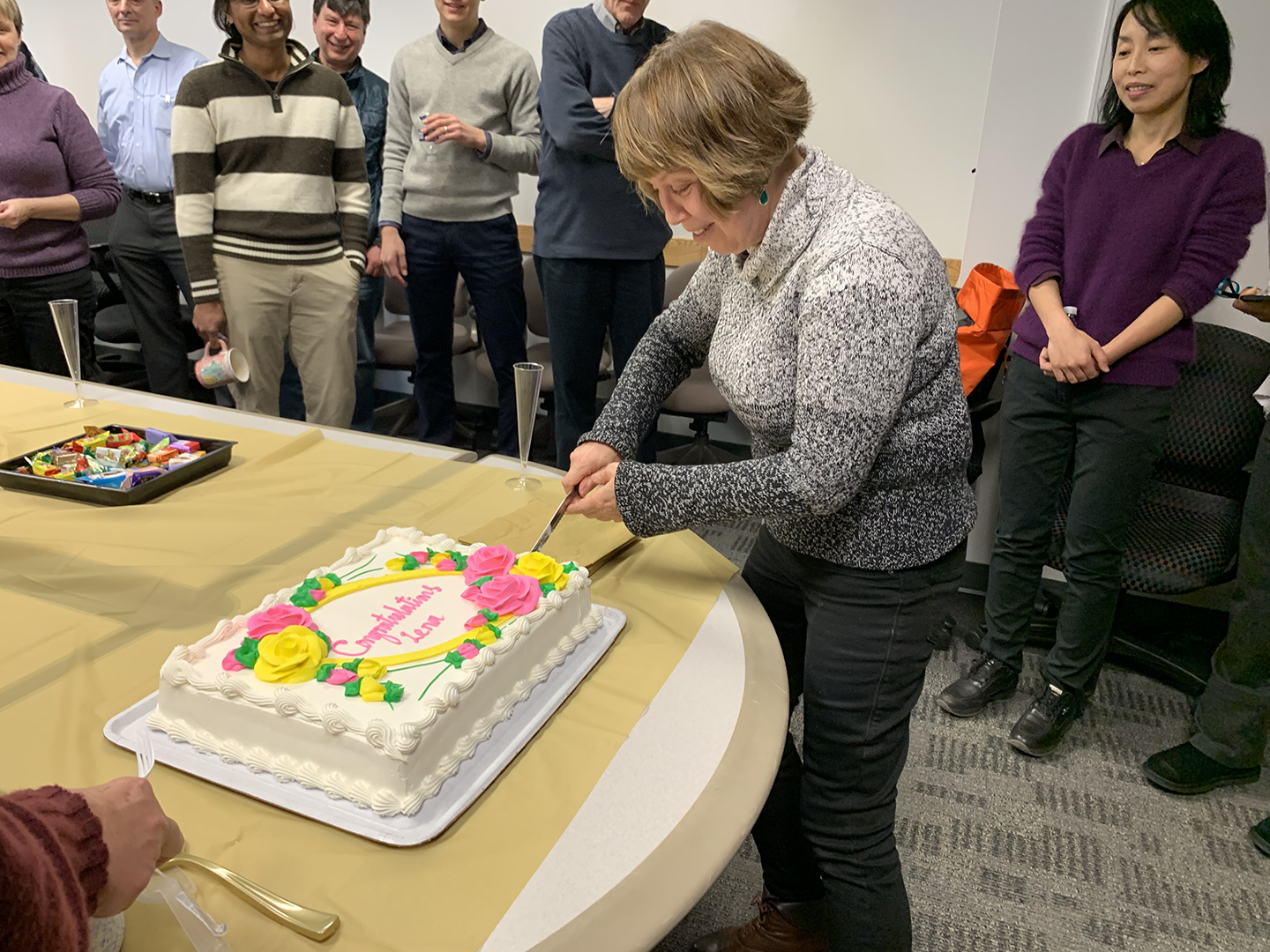Two GMAO Civil Servants Retire and Embark on New Adventures
03.25.2020
Watson Gregg and Lena Marshak have retired after long and illustrious careers at NASA and the GMAO. Their positive contributions to the GMAO’s mission will remain.
Watson Gregg started work at Goddard in the early 1990s. Before joining the GMAO in 2003, Watson was a mission operations manager for NASA's SeaWiFS satellite mission to observe ocean biology from space, followed by a period when he served as a scientist based in the (then) Hydrospheric Processes Branch. Watson led the development of the “NASA Ocean Biogeochemical Model” (NOBM) that represents the biogeochemical cycles including phytoplankton diversity and the carbon cycle in the oceans. NOBM is a critical component of the GMAO's Earth System modeling and data assimilation system. Watson also collaborated with staff at the Goddard Institute for Space Studies, GMAO's sister organization, to include NOBM in their coupled climate model. Alongside NOBM, Watson led development and implementation of the “Ocean-Atmosphere Spectral Irradiance Model” (OASIM) that is a critical component for computing the transfer of light into the oceans where it is absorbed and scattered by the various components before being transmitted back through the atmosphere, which is the signal measured by satellites, the so-called “ocean color” measurements that were captured by SeaWIFS and, later, MODIS and VIIRS.
Watson's work in the GMAO was focused on assimilating the ocean color observations into the ocean models, in order to accurately determine the distributions of phytoplankton and their changes over time. A very active scientist, Watson participated in many international meetings and published numerous papers in the world-class peer-reviewed literature. Researchers within NASA and internationally continue actively to use NOBM and OASIM in their work. Watson will continue to work in GMAO in emeritus status; his modeling and data assimilation work will help NASA's mission in ocean color observations and modeling transition forward into the new era of observations represented by the forth coming PACE mission.
Lena Marshak started her career at Goddard in the mid-1990s as a contractor for General Sciences Corporation, before taking a position as a civil servant in 2001. Over almost three decades, Lena's career at NASA has included scientific programming, data management, visualization, parallel processing experience, and support for modeling studies of Arctic Ocean and high latitude oceanic climate variability, including the application of parallel processing techniques.
Since the inception of the former NSIPP project at NASA GSFC, Lena has been involved in running NASA's coupled forecast model. She began back in 2005 running the NSIPP coupled model with a 2-deg × 2-deg atmosphere, Poseidon V4 ocean model, and Mosaic land surface model. The system substantially evolved over the past 15 years, in which time Lena has kept up with the changes, refining and improving her processing, to turn the “GEOS-S2S” coupled analysis and prediction system into the robust system that it is today. Many who have worked in the GMAO's Seasonal Forecast group have witnessed first-hand the evolution of the GEOS-S2S system in Lena's careful hands, as it transitioned in to a highly-organized, powerful, automated, and user-friendly system. In addition to her task of running the operational forecasts, Lena has contributed to scientific papers, technical memos, group posters, and numerous presentations related to the GEOS-S2S forecast system. She was frequently called upon to run specific forecasts to test various aspects of the coupled forecast system.
Watson and Lena will be missed around the GMAO halls, but their legacies live on the GEOS systems that will run for many years to come.

Lena Marshak cuts the cake at her retirement reception.

